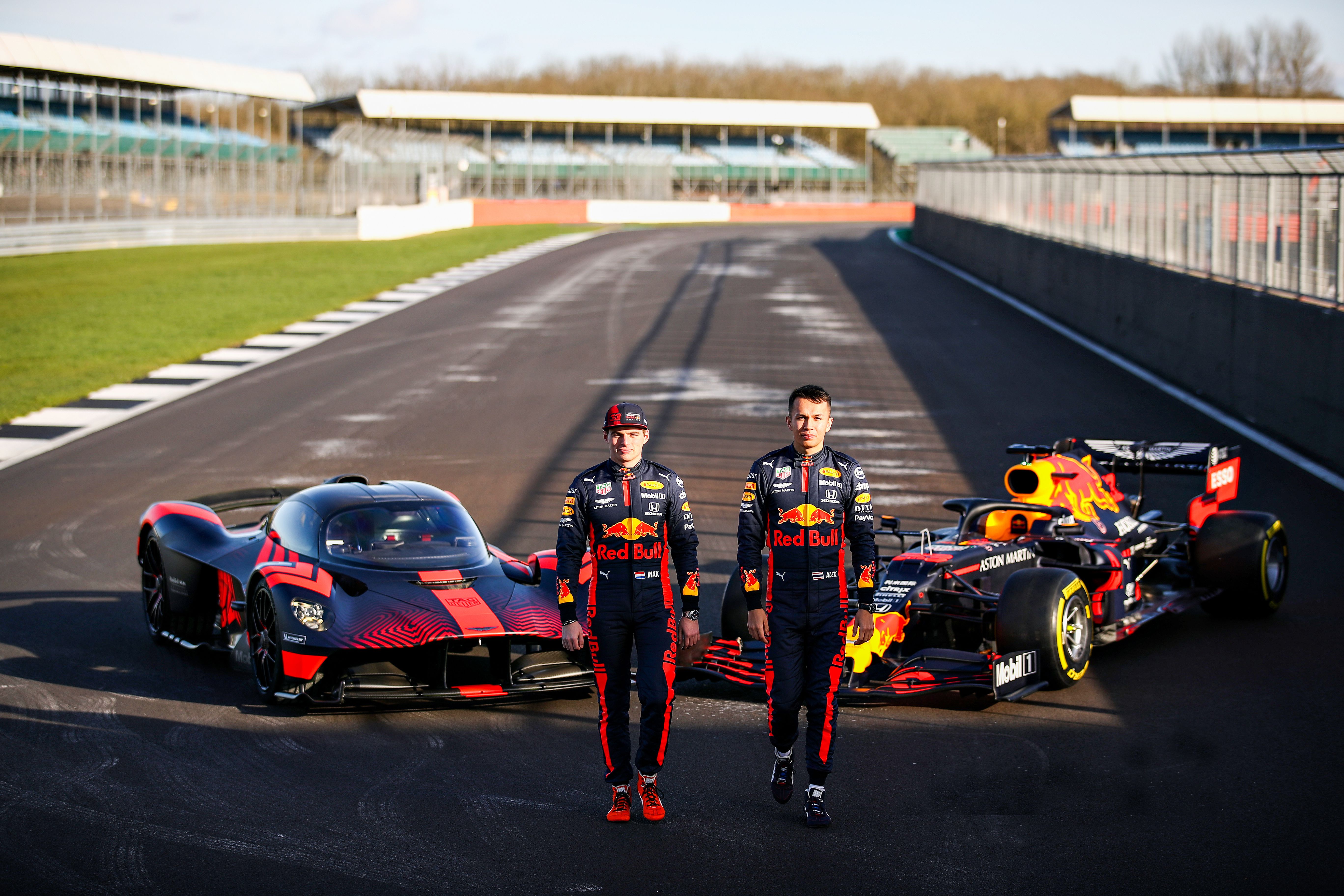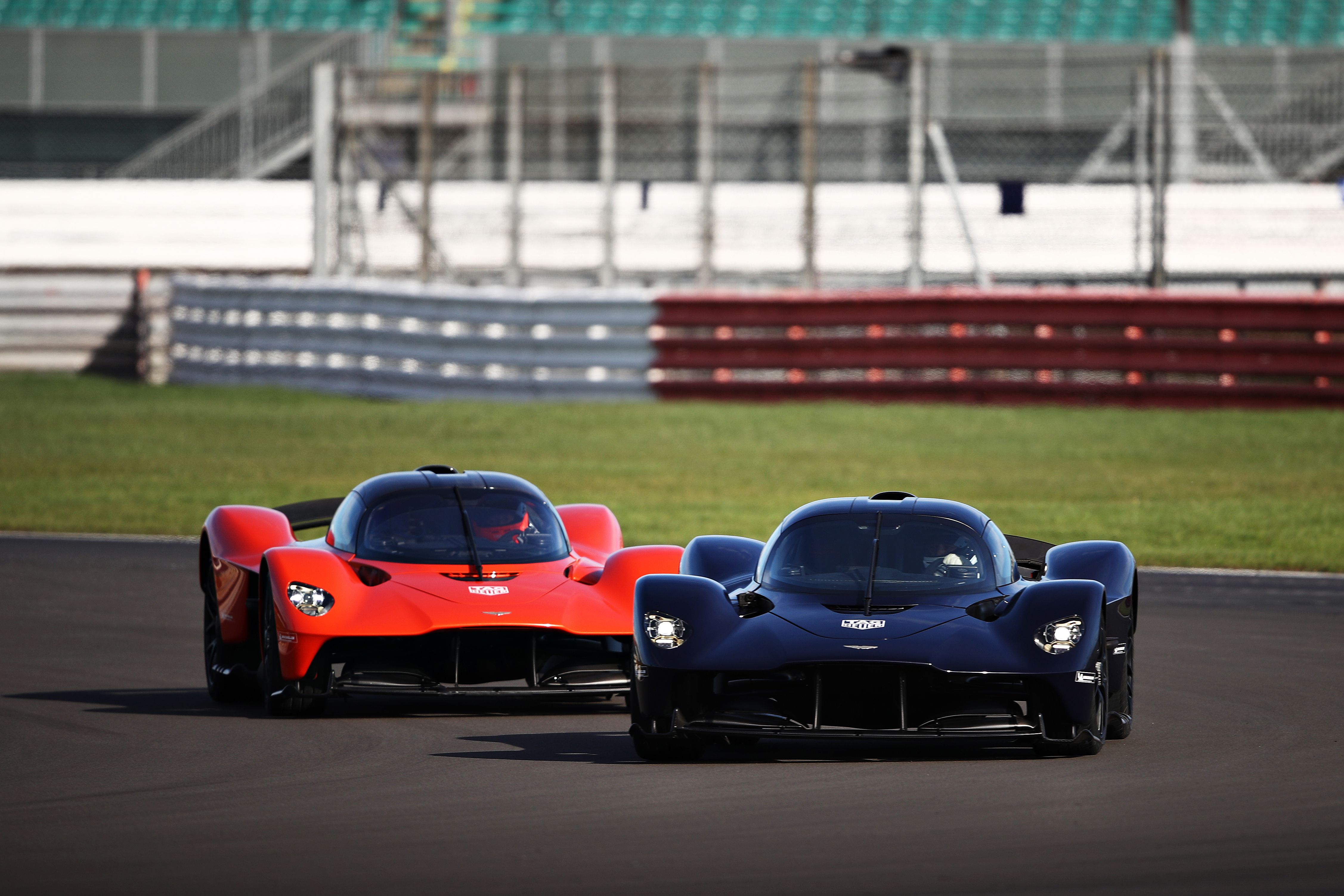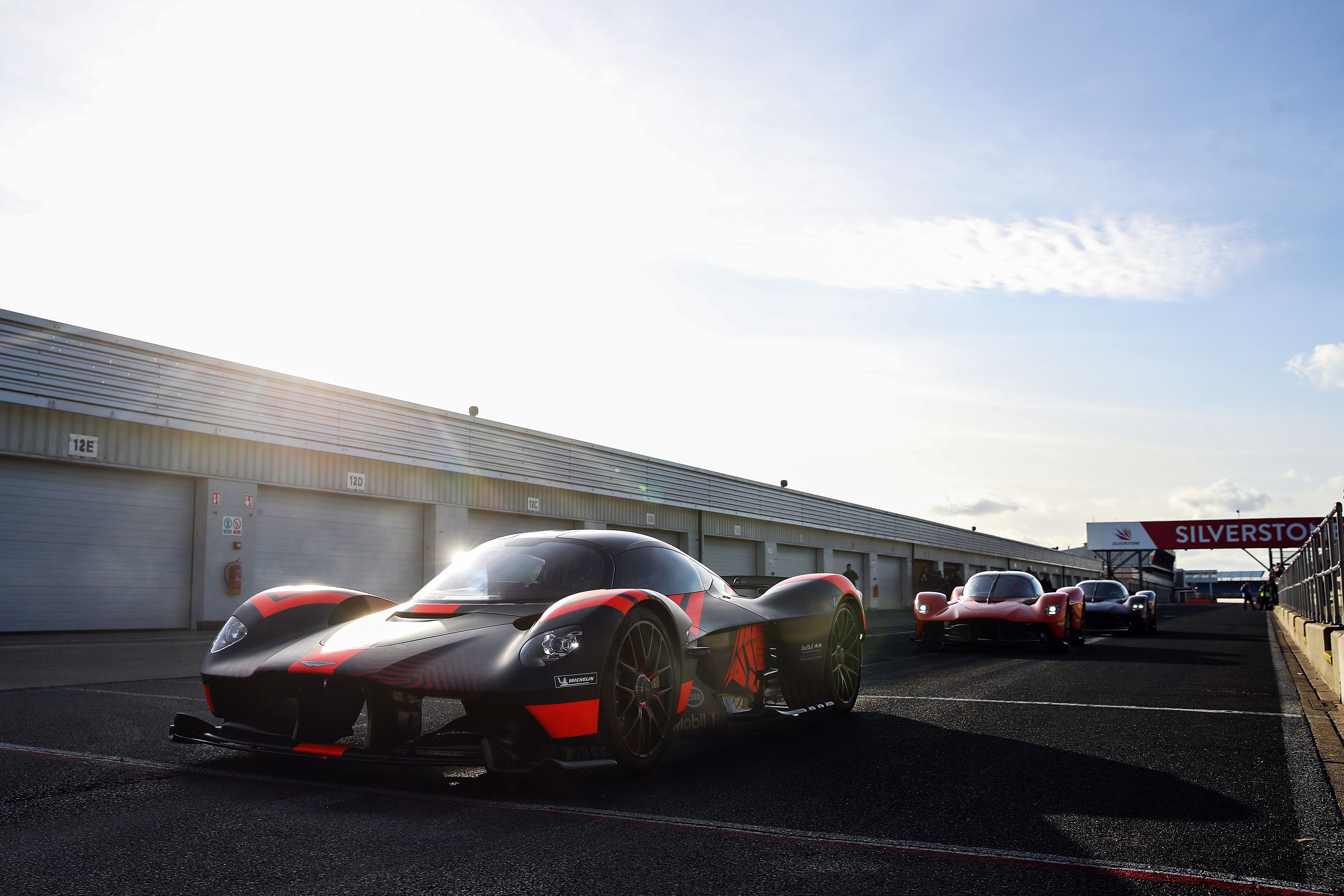Aston Martin will build eight Valkyrie pre-production prototypes that will help its engineers fine-tune the upcoming V-12 hypercar to perfection.
The first three prototypes, named VP1, VP2, and VP3, have already been given a run for their money at Silverstone, by none other than Aston Martin Red Bull Racing F1 drivers Max Verstappen and Alex Albon.
“The First Impression Is Like You’re Almost Sitting in a Formula 1 Car”
These words belong to Max Verstappen, who obviously knows a thing or two about F1 race cars. Aston Martin says Valkyrie customer deliveries are bound to commence later this year, so the other five prototypes are likely to soon join the existing three.
Now, at this point, it’s pretty obvious that Aston Martin has invested a lot of effort and cash into developing the Valkyrie. But to have F1 drivers involved in the R&D phases sends a big “watch out” message to the competition.
Coming back to the Valkyrie, know that it’s been developed from a blank sheet of paper and every component it uses can’t be found on any other vehicle. What’s more, the similarity with an F1 car can be spotted when it comes to the way it cuts through the air - put it on a wet track and it’ll generate the same rooster tail seen on Formula 1 racers during a rainy day.
I hope this will make your day. @astonmartin #Valkyrie on test and unleashed at our Silverstone Proving Ground. pic.twitter.com/IzuUBkyZKn
— Dr. Andy Palmer (@AndyatAston) November 22, 2019
Other than the fancy aerodynamics, the Valkyrie has a Cosworth-developed 6.5-liter naturally-aspirated V-12 engine packing 1,000 horsepower at 10,500 rpm. The motor can rev up to 11,100 rpm (!) and cranks out 740 Newton-meters (546 pound-feet) of torque at 7,000 rpm. It also tips the scales at just 204 kilos (450 pounds).
On top of that, Aston Martin threw in an F1-style KERS boost setup. Oh, and the battery system used by it comes from Rimac, while the e-motor is supplied by Integral Powertrain. When activated, it boosts the Valkyrie’s output to 1,160 horsepower and 900 Newton-meters (664 pound-feet) of twist. That’s 160 horsepower and 280 Newton-meters (207 pound-feet) of torque on top of the V-12’s standard oomph.
What’s next for the Valkyrie?
First of all, there’s still some development to be done and subtle nip and tucks to be performed before the hypercar is ready to meet the owners. Secondly, Aston Martin will continue to build more verification prototypes as it looks to deliver the first customer-ready examples in the second half of 2020.



